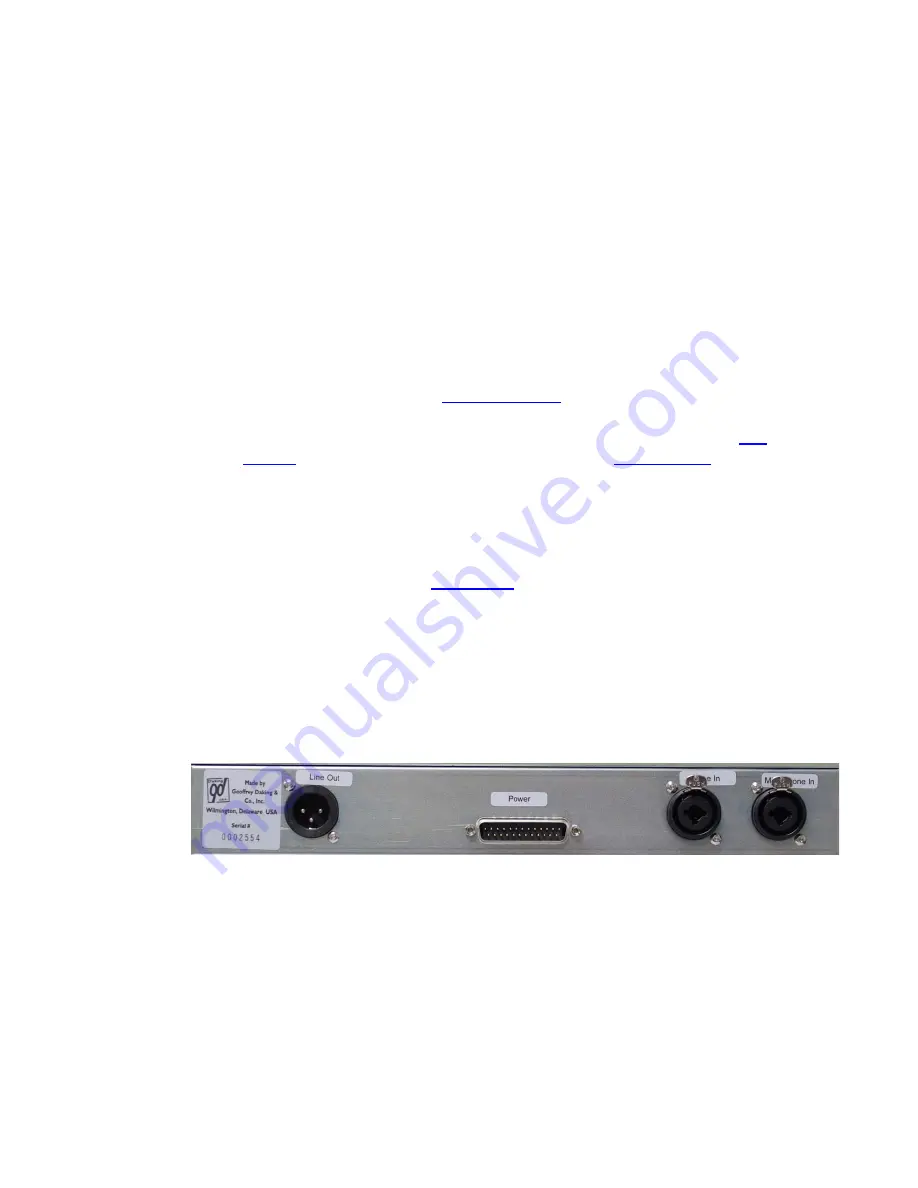
6
1.2.2 Purpose
The job of a microphone amplifier is to make a mic level signal into a line
level signal so that it can be recorded, mixed or processed. The purpose of
an EQ or Equalizer is to boost or cut groups of frequencies to shape the
frequency response, tone or timbre of an audio signal. Many times this is
to correct for a particularly dark microphone, like a ribbon, or a
particularly bright microphone like some small diaphragm condensers. In
mixing, EQ is also used to remove frequencies from one source to make
room for another to prevent masking.
1.2.3 Basic Set Up
microphone (XLR Female to XLR Male) cable. If the mic you are using
is a condenser microphone that requires phantom power, push in the
to engage phantom power. Patch out of the
same preamp to the line level input of your recording device using either a
microphone (XLR Female to XLR Male) cable or balanced line (XLR
Female to a ¼” TRS Male) cable.
You can also plug line level sources (like the output of a different preamp
or an insert send) into the
1.3 The Power Supply
Your Mic Pre EQ ships with an external 48V DC power supply. External
power supplies offer many advantages over internal power supplies like
reducing hum from 50 or 60 cycle power sources and improving the safety
of the equipment you are using.
1.4 Back Panel






























